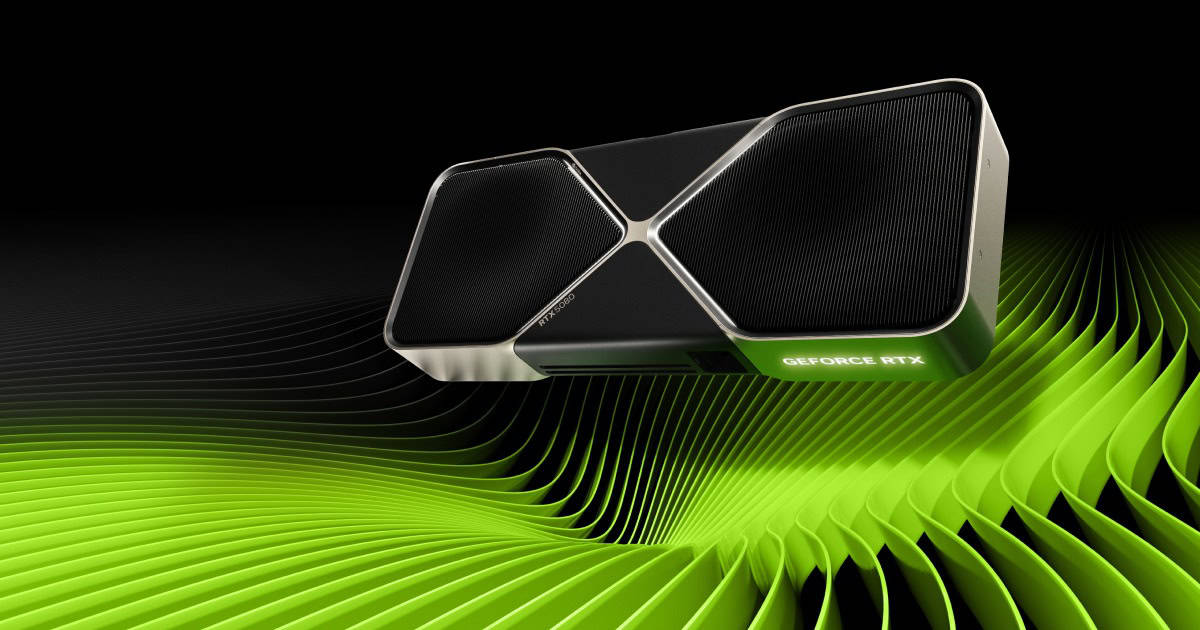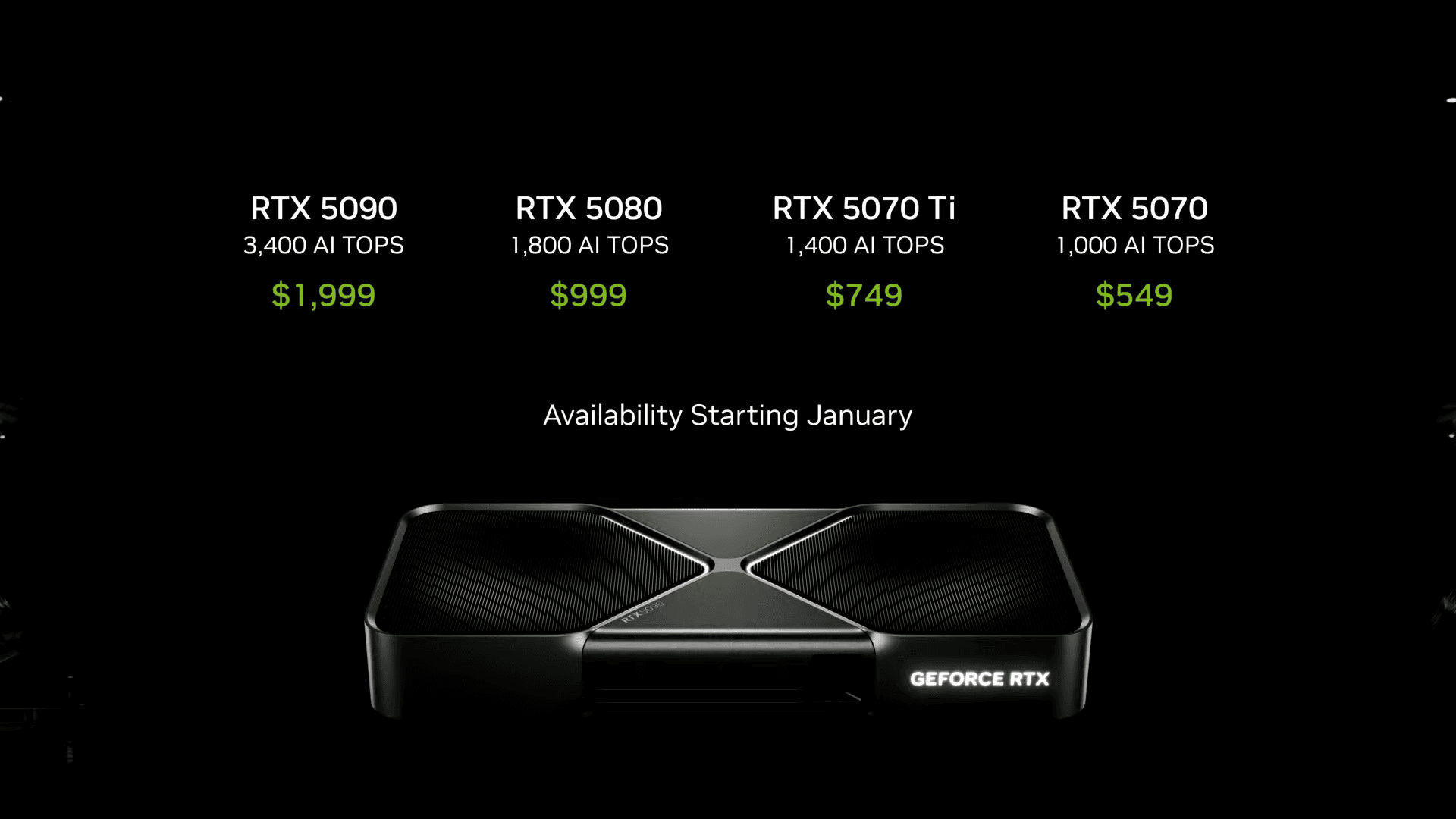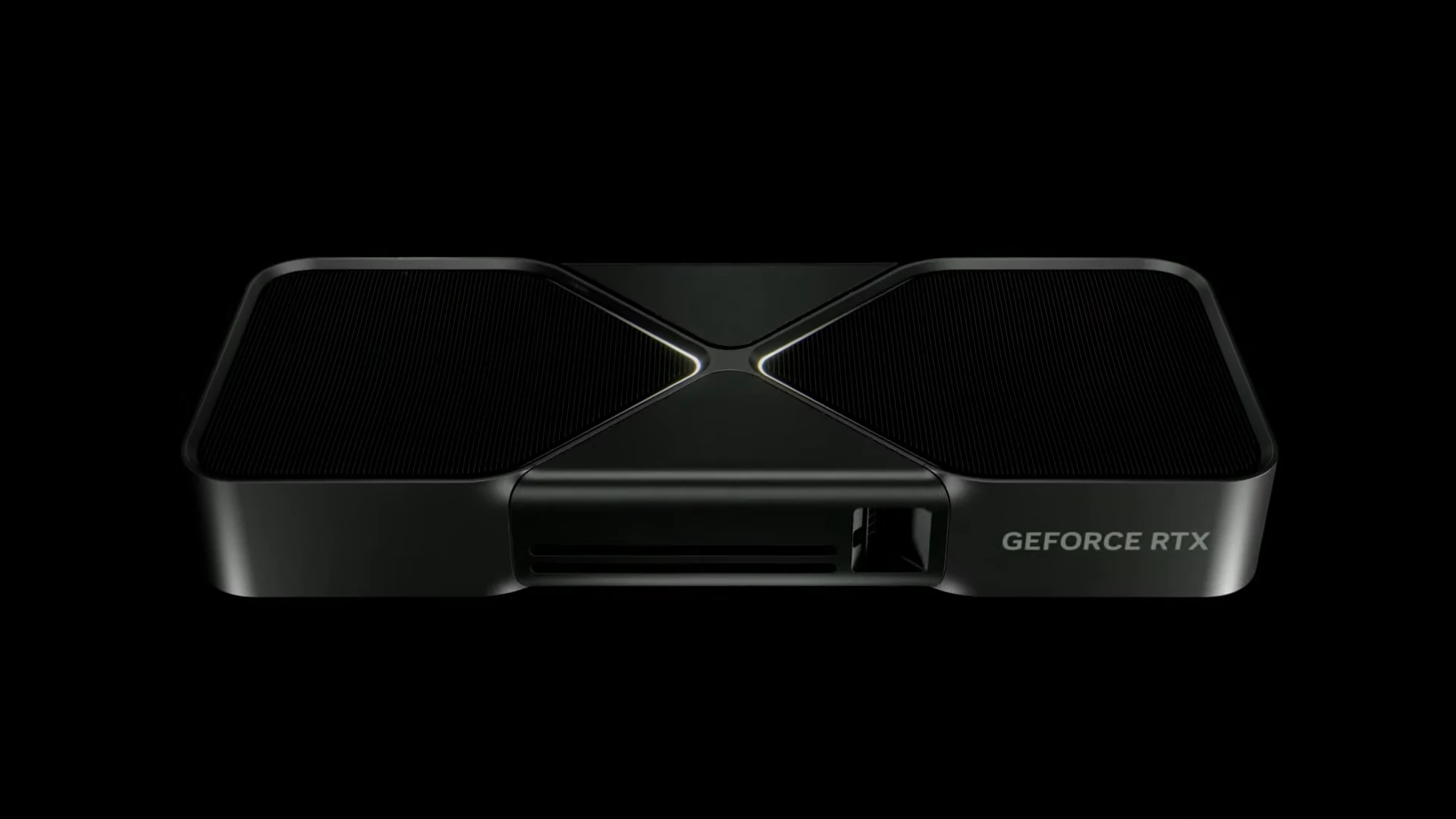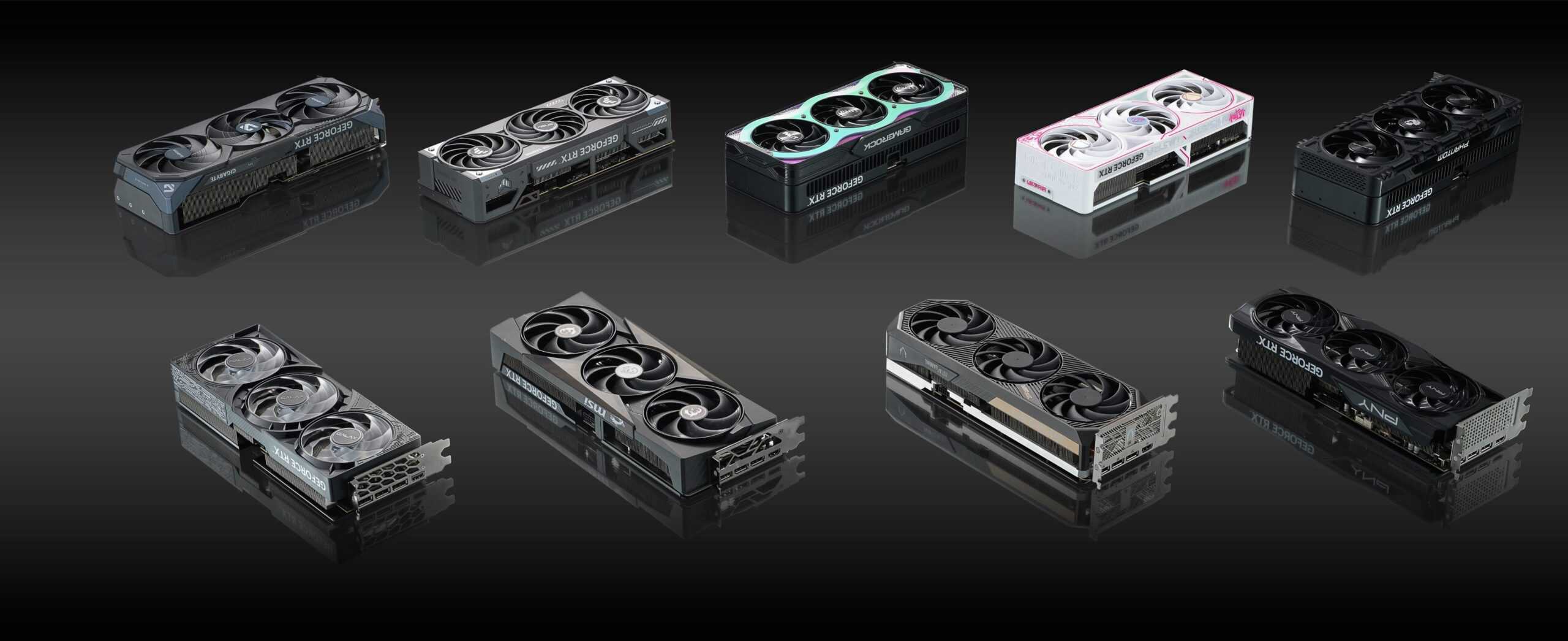NVIDIA has unveiled its latest generation of graphics cards, the RTX 5000 series, at CES 2025. The new lineup includes the RTX 5090 priced at $1,999, RTX 5080 at $999, RTX 5070 Ti at $749, and RTX 5070 at $549. The release date for the RTX 5090 and RTX 5080 will be January 30, 2025. The RTX 5070 Ti and 5070 GPUs will launch in February 2025. These GPUs represent a significant leap in performance and capabilities for both gaming and professional applications.
The Geforce RTX 50-Series Blackwell architecture powering these new cards promises substantial improvements in AI processing and ray tracing performance. Nvidia’s CES keynote highlighted the impressive AI TOPS (Tensor Operations Per Second) of each model, with the RTX 5090 boasting 3,352 AI TOPS and the RTX 5080 offering 1,801 AI TOPS.
Gamers and content creators can expect enhanced frame rates, more realistic graphics, and faster rendering times with these new GPUs. The RTX 5070, priced at $549, is particularly noteworthy as it reportedly matches the performance of the previous generation’s top-tier RTX 4090 at a fraction of the cost.

NVIDIA RTX 5000 Series: A New Era of Graphics
Blackwell Architecture
The entire RTX 5000 series is built upon NVIDIA’s new Blackwell architecture. This architecture represents a significant advancement in graphics technology, offering improved performance, efficiency, and new capabilities. Blackwell incorporates innovations in areas such as ray tracing, AI processing, and memory management, resulting in a substantial generational leap over the previous Ada Lovelace architecture.
Performance Tiers
The RTX 5000 series caters to a wide range of users with its tiered performance levels. At the top sits the RTX 5090, the flagship model designed for enthusiasts and professionals who demand the absolute best. It boasts 21760 CUDA cores, 32 GB of GDDR7 memory, and a 512-bit memory interface, making it capable of handling the most demanding games and workloads with ease.
The RTX 5080 offers a balance of performance and price, featuring 10752 CUDA cores, 16 GB of GDDR7 memory, and a 256-bit memory interface. It’s a great option for gamers who want high-end performance without the extreme cost of the 5090.
The RTX 5070 Ti and 5070 target the mid-range market, with 8960 and 6144 CUDA cores respectively, both featuring GDDR7 memory. These cards are poised to deliver excellent performance at more accessible price points, making them ideal for mainstream gamers and content creators.
GDDR7 Memory

One of the key advancements in the RTX 5000 series is the introduction of GDDR7 memory. This new memory technology offers higher bandwidth and improved efficiency compared to the previous GDDR6X. This means faster data transfer rates and smoother performance, especially in memory-intensive tasks like high-resolution gaming and complex content creation.
DLSS 4 and Ray Tracing
The RTX 5000 series supports the latest DLSS 4 technology, which uses AI to upscale images and improve performance. This allows for higher frame rates and smoother gameplay, particularly at higher resolutions. The series also features enhanced ray tracing capabilities, enabling more realistic lighting, shadows, and reflections in games and applications.
Pricing and Availability

NVIDIA has announced the following prices for the RTX 5000 series:
- RTX 5090: $1,999
- RTX 5080: $999
- RTX 5070 Ti: $749
- RTX 5070: $549
These prices position the RTX 5000 series competitively within their respective performance tiers. Availability is expected to ramp up in the coming weeks and months as production increases and supply chains stabilize.
Comparison Table
| Feature | RTX 5090 | RTX 5080 | RTX 5070 Ti | RTX 5070 |
|---|---|---|---|---|
| CUDA Cores | 21760 | 10752 | 8960 | 6144 |
| Memory | 32 GB GDDR7 | 16 GB GDDR7 | 16 GB GDDR7 | 12 GB GDDR7 |
| Memory Interface | 512-bit | 256-bit | 256-bit | 192-bit |
| Price | $1,999 | $999 | $749 | $549 |
| Release Date | 1/30/2025 | 1/30/2025 | 2/2025 | 2/2025 |
The Future of PC Gaming with the RTX 5000 Series
The RTX 5000 series represents a significant step forward in graphics technology, promising to deliver a new level of performance and visual fidelity for PC gamers. With its Blackwell architecture, GDDR7 memory, and advanced features like DLSS 4 and enhanced ray tracing, the series is poised to redefine the gaming landscape.
Games will be able to render more realistic environments, with higher frame rates and smoother gameplay than ever before. The increased performance headroom also opens up new possibilities for game developers, allowing them to create more immersive and visually stunning experiences.
The RTX 5000 series is not just about pushing the boundaries of graphics; it’s about enabling new forms of gameplay and interactive experiences. As games continue to evolve and become more demanding, the RTX 5000 series provides the foundation for a future where realism and performance are no longer mutually exclusive.

Nvidia CES 2025 Keynote
NVIDIA has once again set a new standard for graphics cards with the launch of its RTX 5000 series at CES 2025. This new generation of GPUs brings significant advancements in architecture, memory technology, and performance capabilities, promising to revolutionize both gaming and professional applications. But with a range of models and price points, choosing the right card for your needs can be challenging. This article provides a comprehensive overview of the RTX 5000 series, comparing its various models and highlighting their key features and benefits. Whether you’re a hardcore gamer, a content creator, or a professional seeking the ultimate graphics solution, this guide will equip you with the knowledge to make an informed decision.
NVIDIA’s CEO Jensen Huang delivered a keynote at CES 2025, unveiling several significant advancements:
- GeForce RTX 50-Series GPUs: NVIDIA introduced its latest lineup of graphics cards, including the RTX 5070 priced at $549, offering performance comparable to the previous generation’s top model, the RTX 4090. The series also features the RTX 5070 Ti at $749, RTX 5080 at $999, and RTX 5090 at $1,999. These GPUs are set to be available between late January and February 2025. Key enhancements include the transition to GDDR7 VRAM for improved power and efficiency, and the introduction of DLSS 4, which leverages advanced AI to enhance gaming visuals and performance.
- AI Model “Cosmos”: Huang introduced “Cosmos,” an AI platform designed to advance robotics by simulating real-world scenarios for robots and autonomous vehicles. Cosmos can generate multiple physically plausible future scenarios, aiding in the training and development of AI models for physical applications.
- Partnership with Toyota: NVIDIA announced a collaboration with Toyota to integrate NVIDIA’s Drive AGX Orin supercomputer and DriveOS operating system into Toyota’s next-generation autonomous vehicles, aiming to enhance the capabilities of self-driving technology.
These announcements underscore NVIDIA’s commitment to advancing AI, gaming, and autonomous technologies.
For a comprehensive overview, you can watch the full keynote here:
Key Takeaways
- NVIDIA’s RTX 5000 series offers significant performance gains across all price points
- The new GPUs feature improved AI processing capabilities for enhanced gaming and professional use
- Availability begins January 30, 2025, with the RTX 5090 and 5080, followed by the 5070 Ti and 5070 in February
Nvidia’s New Innovations
Nvidia’s latest GPU series introduces groundbreaking advancements in architecture and AI-driven rendering. These innovations aim to revolutionize graphics processing and computational capabilities for gamers and professionals alike.
Blackwell Architecture
The Blackwell architecture forms the foundation of Nvidia’s RTX 50 series GPUs. It supports GDDR7 memory and enhanced PCIe Gen 5, offering significant performance improvements over previous generations.
Key features include:
- Fifth-Generation Tensor Cores
- Fourth-Generation RT Cores
- Enhanced AI capabilities
These components work together to deliver unprecedented AI performance. The GeForce RTX 5090 boasts 3,352 AI TOPS (Trillion Operations Per Second), while the RTX 5080 achieves 1,801 AI TOPS.
Blackwell’s innovations enable more efficient power usage and improved thermal management. This allows for better performance in smaller form factors, benefiting both desktop and laptop users.
Advancements in AI-Driven Rendering
Nvidia’s RTX 50 series introduces DLSS 4 technology, marking a significant leap in AI-driven rendering. This new version enhances image quality and boosts frame rates even further than its predecessors.
RTX Neural Shaders leverage AI to create more realistic graphics with less computational overhead. This technology enables:
- Improved ray tracing performance
- More detailed textures and lighting
- Smoother animations in complex scenes
AI foundation models integrated into the GPUs allow for advanced features like real-time language translation in games and enhanced NPC interactions. These models also support digital human technologies, enabling more lifelike character animations and facial expressions.
The RTX 50 series transforms PCs into powerful AI workstations, capable of running complex AI tasks locally. This opens up new possibilities for content creation, scientific research, and next-generation gaming experiences.
The GeForce RTX 50 Series Lineup
NVIDIA’s latest consumer GPUs offer unprecedented performance and AI capabilities. The new lineup includes four models with varying specs and price points to suit different needs and budgets.
GeForce RTX 5090 GPU
The GeForce RTX 5090 stands as the flagship model of the series. It boasts 10,496 CUDA Cores and 24GB of GDDR7 memory, delivering unmatched performance for gaming and creative tasks.
Key features:
- 3,352 AI TOPS
- $1,999 MSRP
- Release date: January 30, 2025
The RTX 5090 targets enthusiasts and professionals seeking the absolute best in GPU technology. Its high core count and ample memory make it ideal for 4K and 8K gaming, as well as demanding AI and rendering workloads.
GeForce RTX 5080 GPU
The RTX 5080 offers an excellent balance of performance and value. It provides a significant step up from previous generations without the premium price of the 5090.
Specifications:
- 1,801 AI TOPS
- $999 MSRP
- Release date: January 30, 2025
This GPU targets gamers and content creators who want high-end performance at a more accessible price point. It excels in 4K gaming and accelerates AI-enhanced applications.
GeForce RTX 5070 Ti GPU
The RTX 5070 Ti fills the gap between the high-end and mid-range offerings. It provides a notable performance boost over the standard 5070 model.
Key details:
- 1,406 AI TOPS
- $749 MSRP
- Available in February 2025
This GPU caters to users who want near-top-tier performance without breaking the bank. It handles 1440p and 4K gaming with ease and supports advanced AI features for content creation.
GeForce RTX 5070 GPU
The RTX 5070 serves as the entry point to the 50 series. It offers a significant upgrade for users coming from older GPUs or looking to build a new mid-range system.
Highlights:
- 988 AI TOPS
- $549 MSRP
- Available in February 2025
This GPU targets mainstream gamers and content creators. It provides excellent 1440p gaming performance and supports AI-enhanced features at a more affordable price point.
Key Features and Enhancements
The NVIDIA RTX 5000 series introduces groundbreaking improvements in ray tracing, AI-powered graphics, and image generation capabilities. These advancements push the boundaries of real-time rendering and AI-assisted content creation.
Ray Tracing and DLSS 4 Technology
The RTX 5000 series enhances ray tracing performance significantly. Ray tracing simulates light behavior for more realistic shadows, reflections, and global illumination. This results in lifelike graphics in games and 3D applications.
DLSS 4 (Deep Learning Super Sampling) builds on previous versions. It uses AI to upscale lower-resolution images to higher resolutions. This technology allows for smoother frame rates without sacrificing visual quality.
Key improvements include:
- Faster ray tracing calculations
- Enhanced anti-aliasing for sharper images
- Reduced artifacts in motion
- Lower latency for more responsive gaming
Neural Shaders and AI Image Generation
Neural shaders represent a leap in graphics technology. They use AI to create complex visual effects more efficiently than traditional shading techniques. This allows for more detailed and dynamic environments in real-time.
AI image generation capabilities enable:
- Real-time creation of textures and assets
- Dynamic world-building in games
- Improved facial animations with RTX Neural Faces
The RTX 5000 series can generate high-quality images on-the-fly. This feature opens new possibilities for procedural content generation in games and creative applications.
Application in Gaming and Professional Workloads
The NVIDIA RTX 5000 series brings significant advancements for both gamers and professionals. These GPUs offer improved performance, efficiency, and AI capabilities across various applications.
Consumer Gaming Experience
The RTX 5000 series elevates gaming to new heights. Gamers can expect smoother framerates and enhanced visual quality in demanding titles. The RTX 5090 leads the pack with its powerful specs, enabling 4K gaming at high refresh rates.
Ray tracing performance sees a substantial boost. Games with complex lighting and reflections run more fluidly. DLSS 3.5 technology, powered by AI TOPS, further improves frame generation and image quality.
VR gaming benefits from increased rendering power. The RTX 5080 and 5070 Ti offer excellent price-to-performance ratios for high-end VR experiences. Esports players will appreciate the lower latency and higher framerates in competitive titles.
Professional Graphics and AI Workloads
The RTX 5000 series transforms professional workflows. 3D artists and animators gain faster render times and improved viewport performance. The RTX 5090’s 32GB of VRAM allows for larger, more detailed scenes.
AI-accelerated tasks see significant speedups. Machine learning model training and inference run more efficiently. Video editors benefit from faster encoding and AI-enhanced effects. The increased AI TOPS enable more complex AI rendering techniques.
Data scientists can process larger datasets more quickly. The improved efficiency of the Blackwell architecture allows for longer sustained workloads. Engineers and researchers in fields like computational fluid dynamics and molecular modeling gain faster simulation times.
Pricing and Availability
NVIDIA has announced competitive pricing for its new RTX 5000 series graphics cards. The flagship RTX 5090 will retail for $1,999, offering top-tier performance for enthusiasts and professionals.
For those seeking a balance of power and affordability, the RTX 5080 is priced at $999. This mid-range option provides excellent value for gamers and content creators.
Budget-conscious buyers have two options:
- RTX 5070 Ti: $749
- RTX 5070: $549
These cards offer strong performance at more accessible price points.
Release dates vary by model:
- RTX 5090 and 5080: January 30, 2025
- RTX 5070 Ti and 5070: February 2025
Laptop variants, including the RTX 5070 for mobile devices, are expected to launch alongside partner announcements from ASUS, Dell, and Lenovo. Specific pricing and availability for laptop models will be revealed by individual manufacturers.
Founders Edition cards will be available directly from NVIDIA, while partner cards may have slight variations in pricing and features. Availability may be limited at launch due to high demand.







